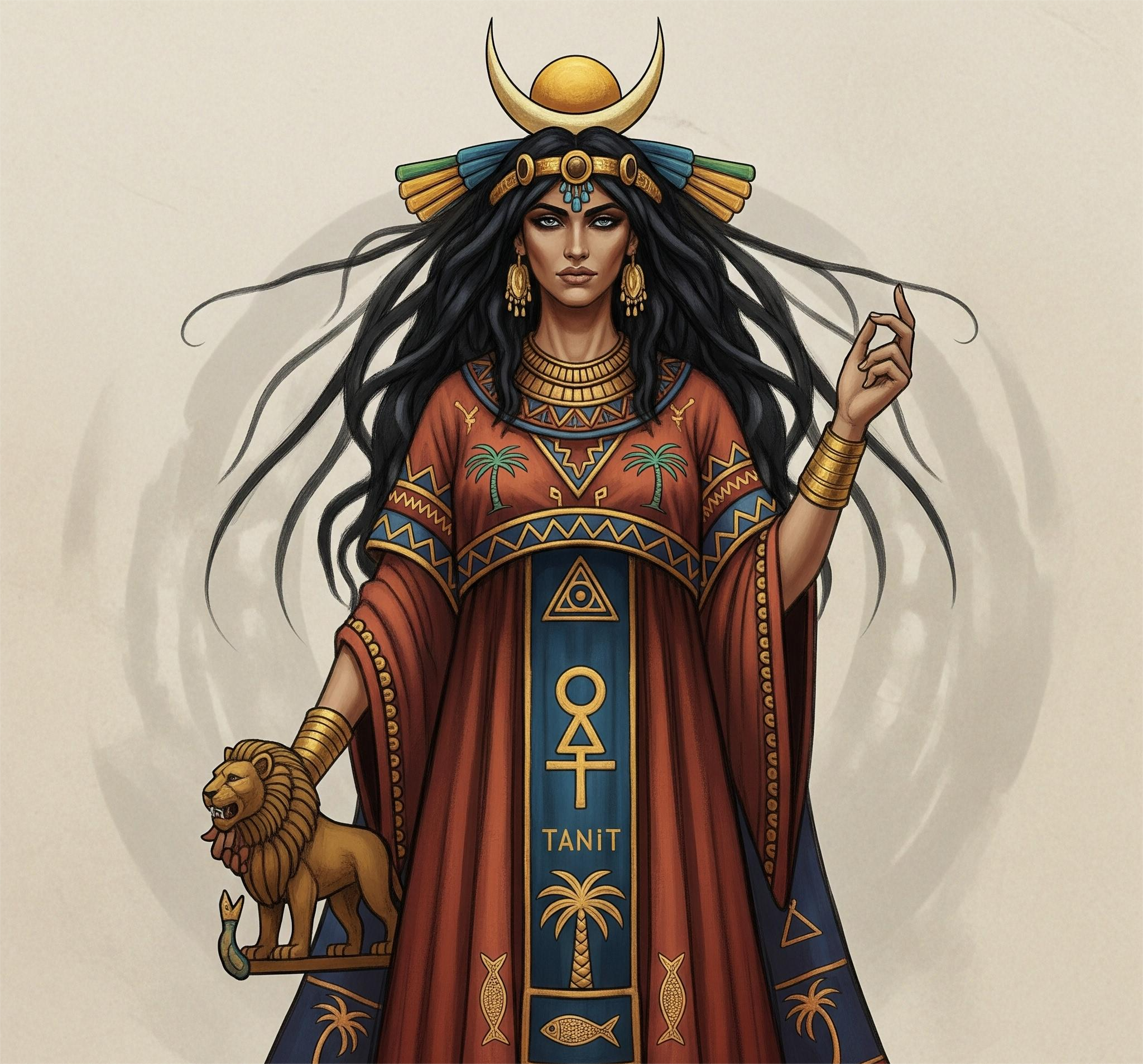Tanit, the chief goddess of Carthage, was a powerful symbol of fertility, motherhood, and celestial protection in the Punic world. Worshiped from the 5th century BCE until the Roman destruction of Carthage in 146 BCE, Tanit often appeared alongside the god Baal Hammon and was central to Carthaginian religion.
Her cult blended Phoenician, Berber, and local North African traditions. Tanit was typically represented by a stylized symbol of a triangle (possibly a body), a horizontal bar (arms), and a circle (head), often carved on stelae found in Carthaginian cemeteries. These symbols appear across the western Mediterranean, indicating the breadth of her worship.
Archaeological evidence, particularly from tophets (sacred enclosures), has sparked controversy due to the possibility of child sacrifices in her name. While some scholars argue these remains represent cremated infants offered to the gods, others suggest they may have been children who died naturally and were ritually buried.
Tanit's legacy survived the fall of Carthage, influencing Roman and North African deities. Today, she remains a powerful icon of ancient femininity and divine protection, honored in neo-pagan circles and studied as one of the most enigmatic goddesses of the ancient Mediterranean.







